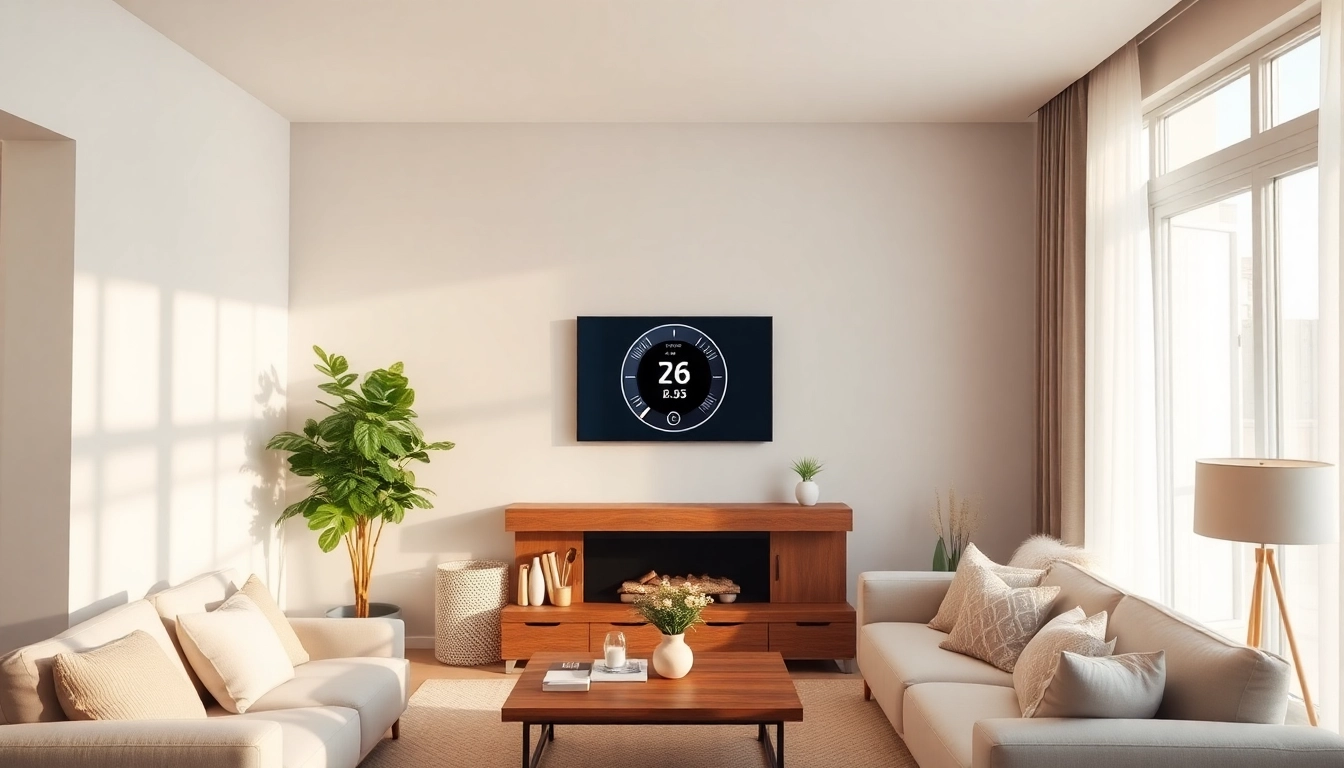Understanding Interior Painting: Basics and Benefits
What is Interior Painting?
Interior painting involves the application of paint to the walls, ceilings, and other surfaces of a room for aesthetic purposes, protection, and enhancing the overall ambiance of a space. It encompasses a variety of techniques and finishes, each contributing to the uniqueness of the environment. Interior painting is not just limited to walls; it can also include ceilings, doors, trim, and cabinetry, often making it one of the most versatile home improvement processes available.
Benefits of Fresh Interior Paint
Fresh interior paint can breathe new life into a home. Some of the most notable benefits include:
- Aesthetics: New paint can dramatically change the look of a room, creating a more inviting and stylish appearance.
- Protection: Quality paint acts as a barrier against mold, mildew, and dirt, thereby prolonging the life of surfaces.
- Increased Property Value: A well-painted interior can enhance the overall value of a home, making it more appealing to potential buyers.
- Personal Expression: Choosing the right colors allows homeowners to express their style and preference, transforming their living space into a personal sanctuary.
- Improved Mood: Colors can influence mood; therefore, a new color scheme can positively affect the emotional well-being of the household.
Choosing the Right Paint Type and Finish
Choosing the right type of paint and finish is critical for achieving desired results. Paint types typically fall into two categories: latex and oil-based. Latex paints tend to be easier to work with, dry faster, and provide a durable finish suitable for most interior applications. Oil-based paints, while less common for interiors today, offer a smooth finish that can withstand wear over time, making them suitable for trim and cabinets.
The finish of the paint also plays a significant role. Options range from matte, eggshell, satin, to gloss, each offering unique properties:
- Matte: Ideal for hiding imperfections but less durable, making it suitable for low-traffic areas.
- Eggshell: A compromise between matte and satin, offering slight gloss and decent washability.
- Satin: More durable and easy to clean, perfect for high-traffic areas.
- Gloss: Highly reflective and durable, great for trim and surfaces requiring frequent cleaning.
Planning Your Interior Painting Project
Assessing Your Space and Preparing Surfaces
Before diving into the painting process, assessing the space and preparing surfaces is crucial to ensure successful results. Start by evaluating the condition of the walls and other surfaces; look for cracks, peeling paint, or stains that need addressing. Proper surface preparation involves cleaning, sanding, and priming surfaces to create an ideal base for painting.
When preparing walls, utilize tools such as scrapers for old paint, sandpaper for smoothing surfaces, and primers to ensure paint adheres properly, ensuring even coverage.
Budgeting for Interior Painting Costs
Budgeting for an interior painting project can vary significantly based on various factors including the size of the space, paint quality, and labor costs. On average, homeowners can expect to pay between $1,800 and $10,000 for interior painting, depending on the project’s scale and complexity.
For instance, painting a standard 12×12 room might range from $300 to $800, assuming professional painters are hired. DIY projects can significantly reduce costs, yet it’s essential to factor in supplies, tools, and time.
Hiring Professional Painters vs. DIY
Deciding whether to hire professionals or tackle the project yourself can impact both the budget and quality of the final result. Professional painters bring expertise, speed, and often guarantee their work, which can save homeowners time and potential hassles. However, DIY painting can be rewarding and cost-effective if one is willing to invest the time and effort into learning the process and techniques.
Ultimately, consider factors such as your budget, time availability, and the scale of the project when making this decision.
Essential Tools and Materials for Interior Painting
Must-Have Painting Supplies
To achieve the best results, having the appropriate tools and materials is essential. Key supplies include:
- Paintbrushes: Different sizes for tackling corners and edges, with synthetic brushes suitable for latex paint.
- Rollers: Ideal for covering larger areas quickly.
- Drop cloths: To protect floors and furniture from paint splatters.
- Painter’s tape: For crisp lines along edges and trim.
- Paint trays: To hold paint for easy access.
- Ladders: Necessary for reaching higher areas.
- Cleaning supplies: Including rags, soap, and water for cleaning up spills and tools.
Understanding Different Brush Types and Rollers
The choice between brushes and rollers depends largely on the specific area being painted. Brushes are perfect for detailed work, such as cutting in along edges and trim. For larger walls, rollers are more efficient and can cover wider areas quickly.
When selecting rollers, consider their fabric type, nap length, and the intended paint type. A shorter nap is ideal for smooth surfaces, while a longer nap is suitable for textured surfaces.
Choosing the Right Color Palette for Your Home
The color palette can significantly impact the ambiance of your interior space. It’s essential to select colors that not only appeal to your taste but also complement the overall design of your home. Consider using a color wheel to identify complementary colors that create harmony.
Neutral tones often provide a soothing backdrop, while bolder colors can be leveraged for accent walls or focal points. Testing out samples in the actual space can help visualize how colors interact with lighting and furniture.
Best Practices for Interior Painting Techniques
Preparing the Room and Protecting Furniture
Before painting begins, taking the time to prepare the room can prevent mishaps and damage. Begin by removing small furniture and décor items, and consider moving larger furniture to the center of the room. Use drop cloths to cover floors and protect from paint splatters. Removing or taping fixtures like outlet covers can enhance the precision of the paint lines.
Step-by-Step Painting Process
Here is a structured approach to the painting process:
- Prepare Surfaces: Clean, sand, and prime surfaces as needed.
- Cut In: Use a brush to paint edges and corners where the roller cannot reach.
- Roll Paint: Starting from one corner, use a roller to cover the larger areas.
- Apply Additional Coats: Depending on the paint type and color, you may need multiple layers for the best coverage.
- Clean Up: Immediately clean brushes and rollers, and remove painter’s tape before the paint fully dries.
Finishing Touches: Trim, Ceilings, and Doors
Once the main surfaces are painted, it’s important to address the details. Trimming requires a steady brush for clean lines, and ceilings often should be painted before walls to avoid drips. Doors and windows may also benefit from an extra coat, especially if they receive high traffic. After the painting is completed, inspect for touch-ups and ensure everything is looking pristine.
Maintaining Your Newly Painted Interiors
How to Care for Painted Walls
Proper care for painted walls can prolong their life. Dust walls regularly with a soft cloth or vacuum attachment to remove dirt and debris. For stains or marks, a mild soap solution can often work wonders. However, it’s crucial to avoid abrasive cleaners that can dull the finish or damage the paint.
When to Repaint: Signs to Watch For
Over time, wear and tear will necessitate repainting. Signs to watch for include:
- Fading: Colors may fade due to sunlight exposure or age.
- Peeling: Paint that begins to peel or flake off indicates a need for repainting.
- Dirt Accumulation: If walls become difficult to clean despite regular maintenance, they may be due for a fresh coat.
Eco-Friendly Paint Options and Sustainability Tips
For environmentally conscious homeowners, choosing eco-friendly paint can minimize the impact on indoor air quality and the planet. Look for low-VOC or zero-VOC paints, which emit fewer chemicals. Additionally, consider recycling old paint or donating surplus paint to local charities to minimize waste. Sustainability practices extend beyond paint to include using reusable tools and conserving resources during the painting process.



